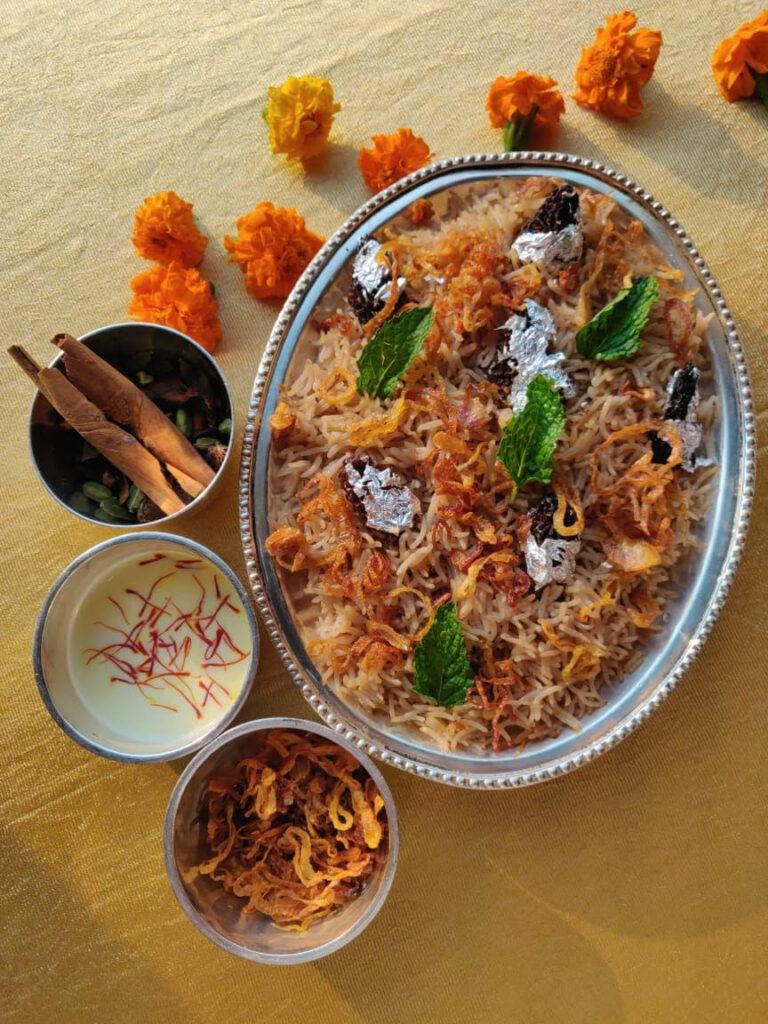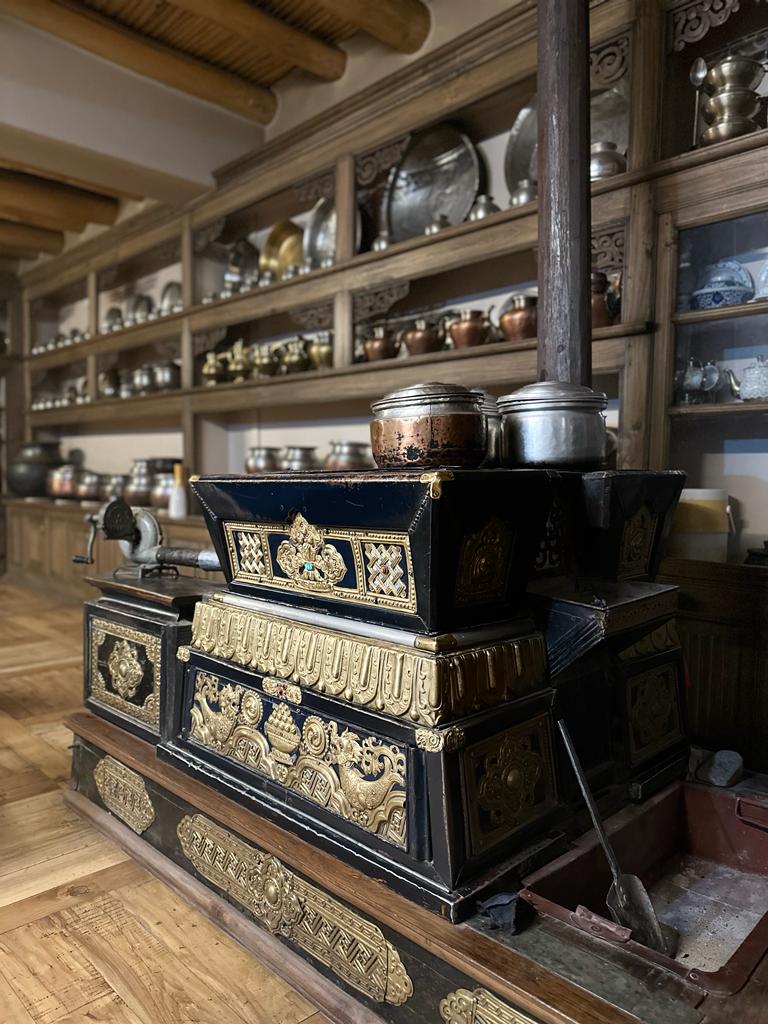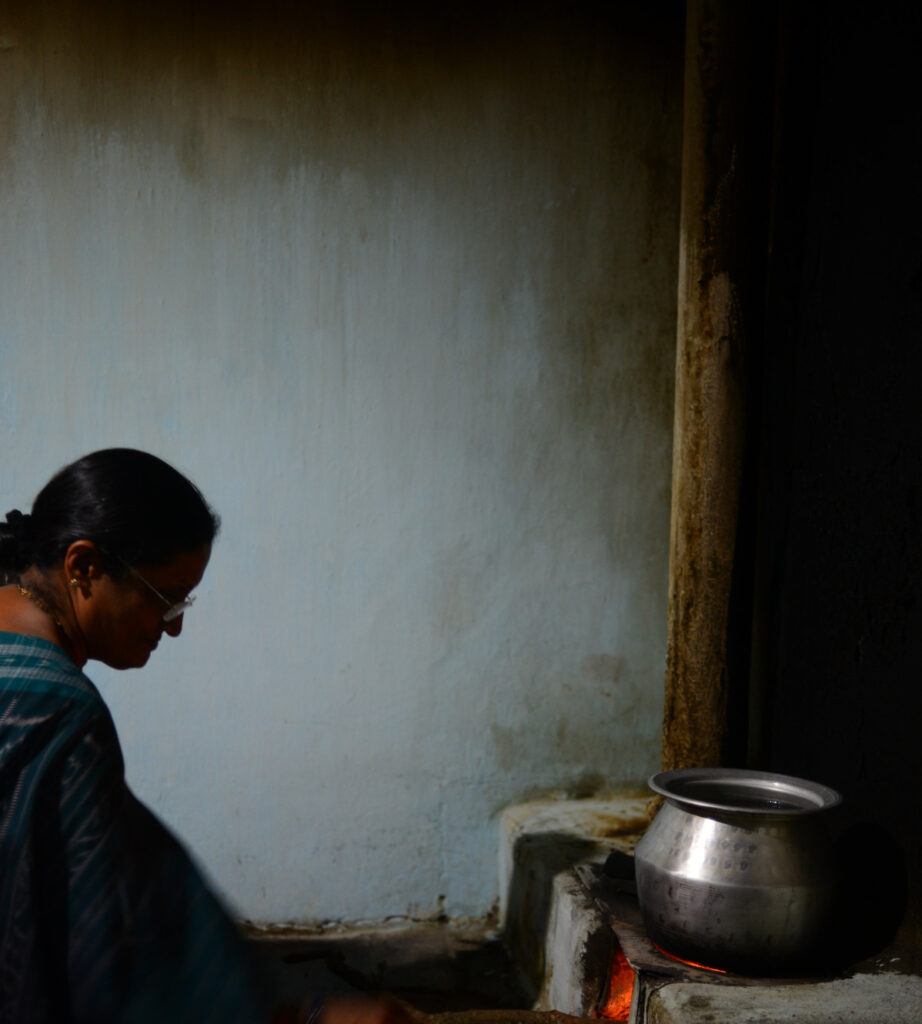Rushina Munshaw Ghildiyal explores how the nature of the cooking flame changes across India in accordance with the climate that surrounds it.
The flames of the young fire burned hot and hungry, leaping over the surfaces of wood we fed it, voraciously consuming everything in its path until its hunger was satiated. Then it settled down to slowly gnaw through every bit of the fuel, until the wood became incandescent with the flame, and the natural grain of its bark lit up with ethereal glowing designs, occasionally spitting embers to remind us of its power.
I spent many, many beautiful evenings staring mesmerized into cooking fires during the pandemic.
Having grown up in a Gujarati home in Mumbai in the 80s, my only memories of the kitchen fire were watching our maharaj and my mother cooking on gas stoves. Relocating to Dehradun during Covid made me look at fire differently.
While our kitchen had a modern gas range, the cold season and WFH life allowed for more leisure activities, and the family often congregated around impromptu barbeques over wood fires in the ancient tasli. And as I tended kebabs and sausages grilling on a rustic mesh placed over the flames, I got up close and personal with them. Staring into their very heart, many thoughts and questions about fire and cooking rose in my mind.
Some of my fascination with the cooking fire was laced with frustration. I was in the process of chronicling the use of spices in Indian cuisine for my Insta-project #SpiceChronicleswithRMG at the time and kept feeling that I was missing something. And one day, like the crackle of embers fires burst into, a thought ignited. My research on spice consumption taught me that our use of spices, as well as almost every aspect of food consumption, was driven by the climate of a region. The diversity of Indian cuisine that resulted from climatic variations in the subcontinent didn’t only manifest in the food we ate, it began with the cooking fire and was fed by what was locally available as food sources.

I reached out to some of the most knowledgeable regional food experts I know from around the country that are championing their respective cuisines. Kunzes Angmo, has been showcasing Ladakhi cuisine through pop-ups across India over the last few years, Diwan Gautam Anand is a veritable encyclopedia on Delhi’s culinary evolution, Nina Doshi champions the cuisine of Zalawar in Northern Gujarat, Kashmiri Nath has been a proponent of Northeast Indian cuisines, Assam, in particular, for a while now. And Kaveri Ponnapa has been a passionate chronicler of the culture and cuisine of the Kodava community of Coorg through her blog and books.
After many riveting conversations, I concluded that while we attribute variations in regional cuisine to climate and season, when we view cuisines from a wider perspective, it becomes apparent that not only was the kitchen fire harnessed in different ways based on the climate, but every aspect of its use – from igniting tools, the kindling and fuel that powered them, their ability to transform food, and even the uses of embers and ashes – had varied connotations as one travelled around India. In fact, it also determined the layout of kitchen, and the utensils that were used.
While the advent of gas stoves and pressure cookers homogenised the cooking flame to a large extent, the nuances of cooking techniques that resulted from cooking in specific climatic conditions still prevail, and these older practices can still be found in older homes across the country, especially in regions where the climate is particularly stark.
Traditionally, kitchens were central to the home, occupying large spaces, often with multiple rooms to accommodate large families . Some homes even had separate seasonal kitchens for summer and winter. The hearth, however, was always central to their construction and purpose. Commonly referred to as chulha in Hindi, the hearth varies in name and form depending on the region.
Across the Himalayas, where the weather is cold, and conditions often harsh, large platforms of varied heights made from metal, mud, and clay prevailed, featuring one to five (or more) holes of various sizes on their surfaces, designed to accommodate cooking pots of different sizes and deliver varying temperatures. These hearths such as the ornate thap of Ladakh, or the intricate daan of Kashmir, also played the role of centrally heating homes. Where seasons changed, the kitchen adapted using varied options, such as different kitchens for summer and winter, techniques like multiple cooking stoves in Chhattisgarh, mobile sagdis in Zalawar, or multiple fires for various uses in the Coorg kitchen. But whatever the name or form the hearth took, the cooking fire held a space far more important than just delivering sustenance.

In the stark environs of Ladakh, fire is life and everything revolves around the kitchen hearth and the cooking fire it harnesses. “Traditionally, the thap is the heart of every Ladakhi home,” shares Kunzes Angmo who via her company Artisanal Alchemy, chronicles and showcases Ladakhi cuisine. “It is where everyone comes together, not just for meals, but throughout the course of the day from morning till night.”
And the kitchen fire is so valued that visitors would pay obeisance to the hearth and the lady of the house.
The importance of the kitchen and hearth resonated with all the people I spoke to. Particularly poignant was Diwan Gautam Anand’s memory: “Our family rebuilt our home in Delhi to replicate the home they left behind in West Punjab during the Partition and the kitchen was given prominence and built exactly the same. Only our rasoi (although gas arrived very fast) at the time was redesigned by my father who was an engineer, with a slightly more elaborate hearth that had two cooking pits with an iron box or ‘oven’ in the middle.” In Delhi’s changing temperatures, this helped the family vary flames. Dishes that needed to cook slowly would go in the oven to cook in the ambient heat, from the flames on either side, while patilas with food to be boiled went on top.

Traditionally kitchen fires were fuelled by varying combinations of biomass including dried plant waste from farming, foraging, and coal and cow dung pellets The hearth was fed with these in varying quantities to control temperatures. The cooking fire itself was often used in tandem with cooking over it, to finish flatbreads with a beautiful char, or cook in their direct heat. In Ladakh, breads were actually baked in them, and in Assam, bamboo hollows filled with meat or rice would be stuck in them to cook. Considering the effort it took, allowing the fire to die out was considered an act of great carelessness. Most kitchens practiced banking fires and used the smoldering embers to reactivate fires the next day with a little kindling.
The ambient heat of the banked hearth was also optimised thoroughly. According to Kashmiri Nath, the pakghor in Assam was usually considered sacred. The traditional setup had two adjoining rooms – one, where the main food was stored and cooked, presided over by the matriarch or the eldest daughter-in-law with restricted access to others. The other, outer room, with a smaller chulha was where family and visitors congregated, through the day. “The main kitchen had an extended raised platform, on which cooked food would be kept warm. The fire was never put out, there were always embers smoldering. Leftover rice would be left on the platform to ferment overnight while potatoes and onions would be put into the embers to slow roast to supplement early morning breakfasts of poita bhaat with rustic pitikas (mashes) before going off to the farms.”
The practice of using the banked fire to roast vegetables and cook other foods extended across cultures. In Delhi, sliced bakery bread would be left to crisp in them, and crushed into breadcrumbs for cutlets and the like. In fact, I suspect the tradition of the mah dal left to cook on embers also stemmed from the philosophy of maximising resources in each kitchen.
Resource optimisation with the kitchen fire manifested in many innovative ways. Nina Doshi reminisced fondly about her mother’s kitchen where food was cooked on sagdis made of aluminium buckets coated with mud for easy handling and heat retention. They would have a mesh on top, surrounded with raised mud sides to hold pots and pans, and a window cut out in the lower half to feed them with coal. “Conservation and maximisation are mottos by which the Gujarati community lives, and our kitchen typically tried to use energy completely,” she said. “So, we adopted a method of vertical cooking. Dal, rice, potatoes, and vegetables would be cooked at one go, in a brass cylindrical dabba called the dabbo.” Interestingly this practice has prevailed even after the advent of the gas and pressure cooker, and many Gujarati homes still cook like this to reduce energy consumption.

The cooking fire was also harnessed to preserve food in wet climates. Kaveri Ponnapa described the role fire played in the Coorg kitchen. “The adegæ manæ or kitchen typically had a waist-high hearth with two main fires, and openings for the main cooking vessels. A third, small subsidiary opening fed by the residual heat of the main fires was kept going all day long to heat water, or make coffee, because in wet and cold Coorg, hot water and coffee were constantly in demand,” she said.
In fact, fire was also essential in making the signature Coorg black masala. “Our karta (black) masala is made by individually slow roasting, cooling, and grinding a selection of local spices to a very dark, almost black colour,” said Ponnapa . “The slow roasting extracts deep, earthy flavours but also removes excess moisture because Coorg was so wet and damp. It is one of the secrets of our cooking, because if you do this right your dish tastes completely different!” She went on to describe how the heat of the hearth played a dual role, of keeping precious commodities dry. “Salt, dried meats and other things would be suspended in a little cane basket above the hearth, keeping them dry and adding a smokiness to everything. A variety of dried fish and meats like pork and venison were also dried and preserved.” Adding that in days when hunting prevailed and guns were used freely, gun powder would also be hung there to keep it dry. Similar practices prevailed in the wet tropical northeast where bamboo baskets were suspended over the hearth to dry meat and fish.
Using the cooking fire for food preservation is not limited to drying meat. Through my larger studies, I’ve come to realise that the cooking fire plays a quintessential role overall in Indian cuisine.
After all, techniques like talna (frying) and tadka (tempering) that have prevailed through centuries, are methods that add value beyond taste. Frying converted kaccha or raw foods to pakka khaana, and tempering enhanced the bioavailability of the plant based diet we consumed. The cooking fire was harnessed along with fat to treat foods with high-temperature, fat-based techniques that reduced moisture and extended their shelf life. With our tropical climate, in which food is extremely prone to microbiological intervention, fire became essential to food preservation and enhanced nutrition.
The most important roles a kitchen fire played in the regional Indian kitchen down the ages, however, are far less measurable, but infinitely more precious. The gas flame brought some degree of convenience, and liberation for some women from the gendered space the Indian kitchen evolved into. But it cooled the embers, flattened out the flavour of char and smoke and distanced us from the sense of community and belonging that the cooking fire flickering in the hearth gave us. No wonder then that today we search for all of that in the smoke and embers of barbeques and tandoors!


